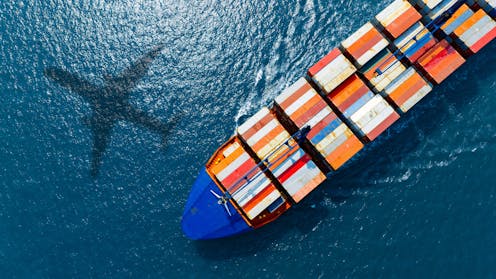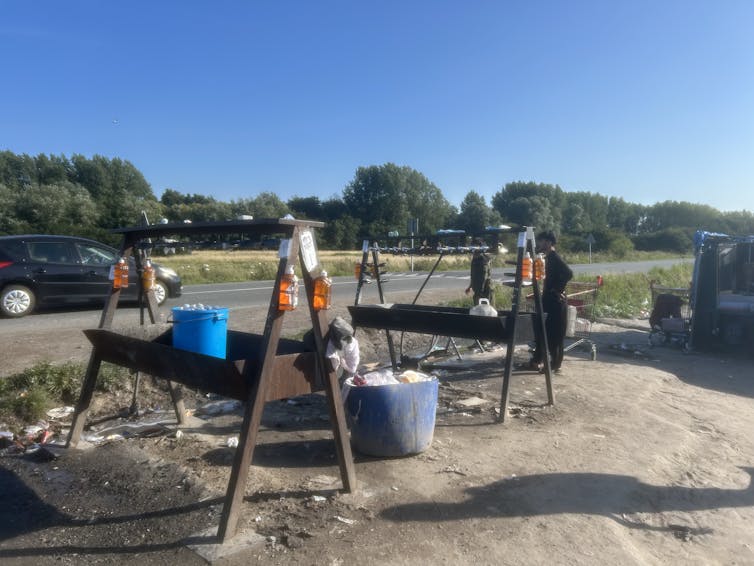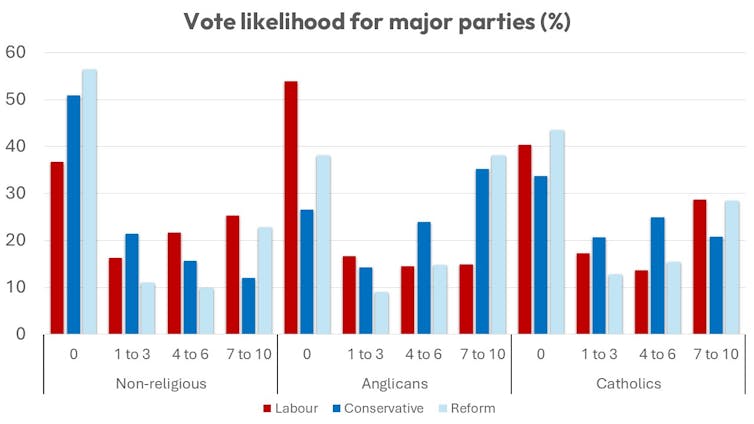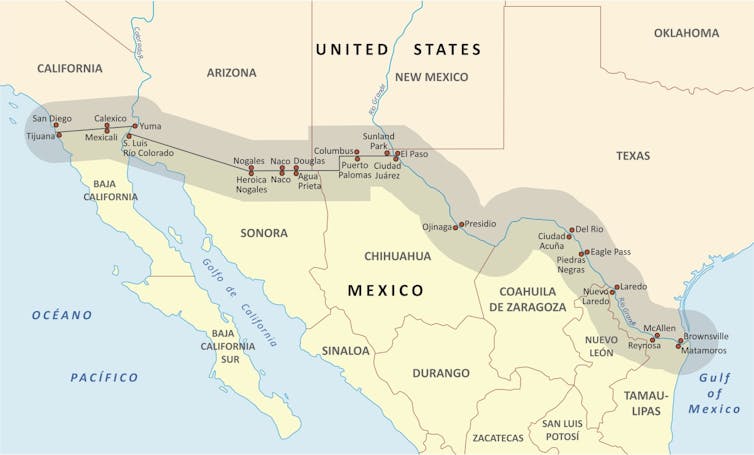Source: The Conversation – UK – By Adam Taylor, Professor of Anatomy, Lancaster University
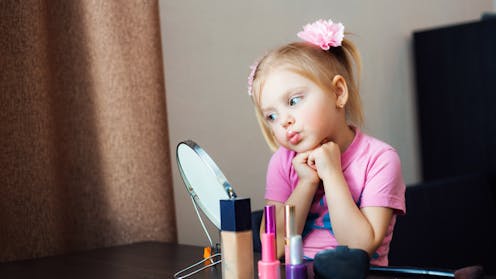
Would you dab perfume on a six-month-old? Paint their tiny nails with polish that contains formaldehyde? Dust bronzer onto their cheeks?
An investigation by the Times has found that babies and toddlers are routinely exposed to adult cosmetic products, including fragranced sprays, nail polish and even black henna tattoos.
While these may sound harmless – or even Instagram-friendly – the science tells a more concerning story. Infant skin is biologically different from adult skin: it’s thinner, more absorbent and still developing. Exposure to certain products can lead to immediate problems like irritation or allergic reactions, and in some cases, may carry longer term health-risks such as hormone disruption.
This isn’t a new concern. A 2019 study found that every two hours in the US, a child was taken to hospital because of accidental exposure to cosmetic products.
Newborn skin has the same number of layers as adult skin but those layers are up to 30% thinner. That thinner barrier makes it easier for substances, including chemicals, to penetrate through to deeper tissues and the bloodstream.
Young skin also has a higher water content and produces less sebum (the natural oil that protects and moisturises the skin). This makes it more prone to water loss, dryness and irritation, particularly when exposed to fragrances or creams not formulated for infants.
The skin’s microbiome – its protective layer of beneficial microbes – also takes time to develop. By age three, a child’s skin finishes establishing its first microbiome. Before then, products applied to the skin can disrupt this delicate balance. At puberty, the skin’s structure and microbiome change again, altering how it responds to products.
The investigation found that bronzers and nail polish were being used on young children. These products often contain harmful or even carcinogenic chemicals, such as formaldehyde, toluene and dibutyl phthalate.
Toluene is a known neurotoxin, and dibutyl phthalate is an endocrine disruptor – a chemical that can interfere with hormone function, potentially affecting growth, development and fertility. Both substances can more easily pass through infants’ thinner, more permeable skin.
Even low-level exposure to formaldehyde, such as from furniture or air pollution, has been linked to higher rates of lower respiratory infections in children (that’s infections affecting the lungs, airways and windpipe).
Irritating ingredients
In the US, one in three adults experiences skin or respiratory symptoms after exposure to fragranced products. If adults are reacting, it’s no surprise that newborns and children with their developing immune systems are at even greater risk.
Perfumes often contain alcohol and volatile compounds that dry out the skin, leading to redness, itching and discomfort.
Certain skincare ingredients have also been studied for their potential to affect hormones, trigger allergies or pose long-term health concerns:
-
alkylphenols used in detergents and cosmetics may disrupt hormone activity
-
antimicrobials such as triclosan can interfere with thyroid hormones and contribute to antibiotic resistance
-
bisphenols, (BPA widely used in packaging are linked to hormone disruption.
-
cyclosiloxanes (D4 and D5) may accumulate in the body and affect hormonal balance
-
ethanolamines can react with other ingredients to form nitrosamines, some of which are potential carcinogens
-
parabens are preservatives that mimic oestrogen, though some studies suggest minimal risk at low doses
-
phthalates used in fragrances and plastics are linked to reproductive toxicity, especially in early-life exposures
-
benzophenone is found in many sunscreens and some forms may act as allergens and hormone disruptors.
While many of these ingredients are permitted in regulated concentrations, some researchers warn of a “cocktail effect”: the cumulative impact of daily exposure to multiple chemicals, especially in young, developing bodies.
Read more:
Scroll, watch, burn: sunscreen misinformation and its real‑world damage
Temporary tattoos
Temporary tattoos, particularly black henna, are popular on holidays but they aren’t always safe. Black henna is a common cause of contact dermatitis in children and may contain para-phenylenediamine (PPD), a chemical approved for use in hair dyes but not for direct application to skin.
PPD exposure can cause severe allergic reactions and, in rare cases, cancer. Children may develop hypopigmentation – pale patches where colour is lost – or, in adults, hyperpigmentation that can last for months or become permanent.
Worryingly, children exposed to PPD may experience more severe reactions later in life if they use hair dyes containing the same compound. This can sometimes lead to hospitalisation or even fatal anaphylaxis. Because of these risks, European legislation prohibits PPD from being applied directly to the skin, eyebrows, or eyelashes.
‘Natural’ doesn’t mean harmless
Products marketed as “natural” or “clean” can also cause allergic reactions. Propolis (bee glue), for instance, is found in many natural skincare products but causes contact dermatitis in up to 16% of children.
A study found an average of 4.5 contact allergens per product in “natural” skincare ranges. Out of 1,651 “natural” personal care products on the US market, only 96 (5.8%) were free from contact allergens. Even claims like “dermatologically tested” don’t guarantee safety; they simply mean the product was tested on skin, not that it’s free from allergens.
Babies and young children aren’t just miniature adults. Their skin is still developing and is more vulnerable to irritation, chemical absorption and systemic effects: substances that penetrate the skin can enter the bloodstream and potentially affect organs or biological systems throughout the body. Applying adult-targeted products, or even well-meaning “natural” alternatives, can therefore carry real risks.
Adverse reactions can appear as rashes, scaling or itchiness and, in severe cases, blistering or crusting. Respiratory symptoms like coughing or wheezing should always be investigated by a medical professional.
When in doubt, keep it simple. Limit what goes on your child’s skin, especially in the early years.
Get your news from actual experts, straight to your inbox. Sign up to our daily newsletter to receive all The Conversation UK’s latest coverage of news and research, from politics and business to the arts and sciences.
![]()
Adam Taylor does not work for, consult, own shares in or receive funding from any company or organisation that would benefit from this article, and has disclosed no relevant affiliations beyond their academic appointment.
– ref. Using cosmetics on babies and children could disrupt horomones and trigger allergies – https://theconversation.com/using-cosmetics-on-babies-and-children-could-disrupt-horomones-and-trigger-allergies-261204

